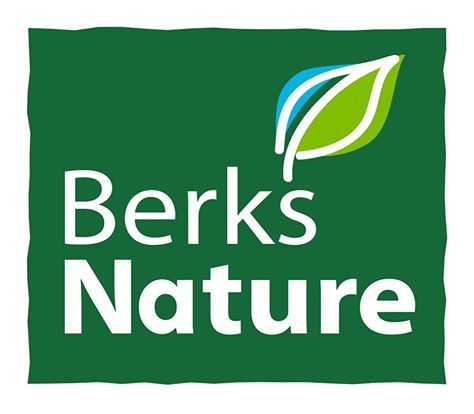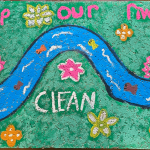This year, we celebrate the 50th Anniversary of Earth Day, a grassroots movement that culminated into the largest public demonstration yet observed in the United States, mobilizing 20 million people on behalf of Mother Earth. The outpouring of public activism quickly leveraged a political response. In the years following Earth Day, the federal government established the Environmental Protection Agency and passed a series of laws designed to safeguard the air we breathe, water we drink, and land on which we live. Reflecting on the first Earth Day and the environmental movement that followed, John C. Whitaker, Cabinet Secretary to President Nixon, had this to say: “The feverish pitch of Earth Day 1970 passed, but the environmental movement did not go away. Instead, the drive for a cleaner environment became part of our national ethic. Now it is taken for granted, the best possible testimonial that progress is being made. Our nation’s thinking has changed. Endorsing growth without regard to the quality of that growth seems forever behind us. The failure of the economy to take into full account the social costs of environmental pollution is being rectified.” Those words were written in 1988. Can the same be said of America today? Is a clean environment still a keystone of our national ethic? Or have we taken for granted the progress that 20 million people demanded 50 years ago? In this short series titled Earth Day Reflections, we consider the role of Earth Day and the evolution of America’s stewardship ethic in three parts: first, we look back on the past to remind ourselves of how far we’ve come; then we consider the state of our environment today, celebrating and calibrating our environmental victories; and finally, we look to the future and acknowledge both the challenges and opportunities ahead. The Past: Dawn of Plastics “Reduce, Reuse, Recycle”: it’s a catchphrase that earned international recognition during the environmental movement of the 1970s, but the sentiment has roots that reach far deeper into our cultural history. The United States once embraced an ethic of reuse. People recycled to survive during the lean 1930s, when the Great Depression crippled the global economy. During WWII, Americans on the home front contributed to the war effort by rationing and recycling materials like nylon, rubber, and many metals. But during the economic boom following WWII, no longer crippled by financial uncertainty, Americans ushered in a new era of consumption – one that celebrated “disposable living” and single-use plastics. Plastic production had soared during WWII, replacing common manufacturing materials like metal, glass, natural rubber, and wood. By the end of the war, annual plastic production in the United States had skyrocketed by 300%. With victory attained, due in large part to the production gusto of American industry, plastic manufacturing shifted its focus from wartime production to domestic consumption, and the American public were all too eager to welcome the disposable age of plastic. By the 1960s, scientists were already noticing plastic debris littering our oceans. Earth Day and the Present: Reviving Recycling The first Earth Day in 1970 helped elevate public awareness of recycling. Already, Americans were growing wary of the excess waste piling up around them. Before the 1970s, there was no federal regulation of solid waste, and most trash was simply burned in landfills, barrels, or pits. As the environmental movement of the 1970s built momentum, so too did recycling. In 1980, Woodbury, New Jersey became the first city to mandate recycling. Its curbside pickup program became the national model. By the mid-1990s, the United States housed more than 10,000 recycling centers and 4,000 curbside recycling programs. But recycling’s revival in the United States is complicated by corporate involvement. In the early 1950s, the American Can Company and Owens-Illinois Glass Company, later joined by Coca-Cola and Dixie Cup Company, created Keep America Beautiful – a nonprofit that initiated America Recycles Day and launched a series of anti-littering and pro-recycling campaigns including the iconic “Crying Indian” ad seen by many as a symbol of environmental idealism. On the surface, these efforts to reduce litter and promote recycling look like a good faith showing by industry powerhouses to acknowledge and address the country’s swelling waste problem. But behind the charitable curtain of Keep America Beautiful, its calculating puppeteers – the plastic and manufacturing industries – were artfully hijacking the narrative surrounding American recycling. By demonizing littering and celebrating recycling, corporate interests completely reframed our excess of waste as a problem for consumers – deflecting public attention away from industry regulation and shifting the burden of managing the country’s waste squarely on the shoulders of you, the individual. In the words of the “Crying Indian” ad: “People start pollution. People can stop it.” The implications of this narrative shift are far-reaching. The European Union holds manufacturers responsible for disposing of their post-consumer packaging and enjoy a recycling rate of 46% for municipal waste (Germany, which adopted corporate accountability in 1991, now reduces or recycles 70% of its waste stream). As of 2017, the United States recycled about 35% of their municipal waste. In that same year, the United States’ generated 13.5 million tons of plastic waste (an increase of 8.2% since 1990). Our Future: Reduce Before Recycling To understand and overcome recycling’s uncertain future in the United States, we need to critically revisit the 3 R’s of recycling. Reduce, Reuse, Recycle. This is our roadmap for the future, to be followed in that order; reduce before recycling. Recycling is a complicated topic but also a necessary measure to deal with American waste. However, recycling alone, especially one that does not hold corporate producers responsible, cannot successfully address plastic pollution alone. We must address the ultimate source – first, we must reduce. In 2014, California became the first state to impose a statewide ban on single-use plastic bags at large retail stores. New York, Delaware, Connecticut, Oregon, and hundreds of municipalities across the United States have also restricted or fined the use of plastic in some way. Consumers also have a role to play by reducing and refusing plastic products. As ubiquitous as plastic packaging is, the average American will be hard pressed to eliminate their plastic waste altogether. There are however lots of little things we can do to gradually change our habits and reduce our plastic consumption.
Bit by bit, if we share the responsibility of waste management, we the people can take back the recycling narrative. |
Earth Day Reflections: Waste, Indicator: Recycling Rate
By Berks Nature




